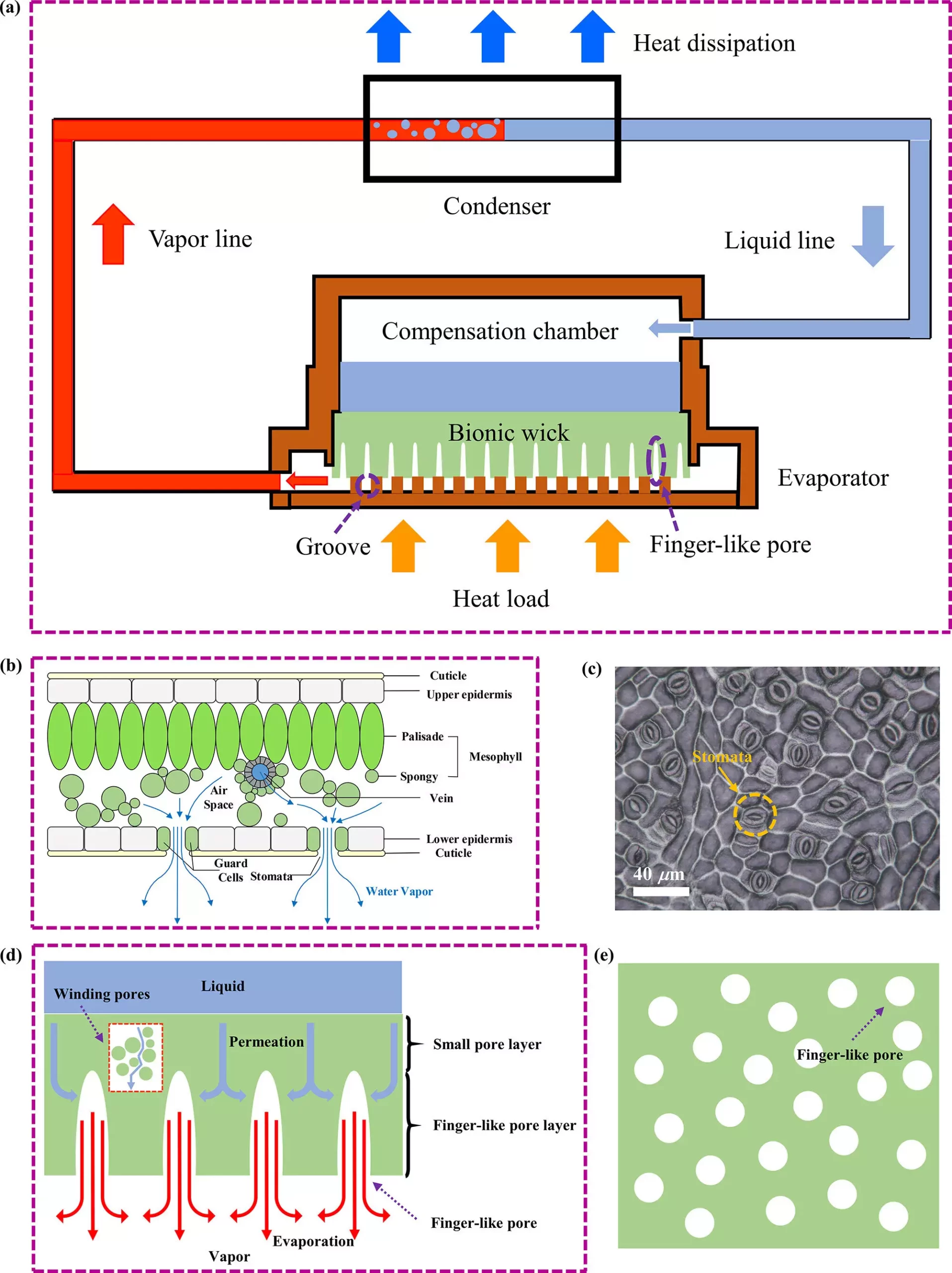In a breakthrough study led by Prof. Ye Hong from the University of Science and Technology of China, a remarkable alumina ceramic bionic wick with finger-like pores has been created. The inspiration for this pioneering technology came from the intricate stomatal array found in natural leaves. This innovative bionic wick design has the potential to revolutionize cooling strategies for electronic chips in the face of increasing power consumption and heat generation.
One of the main challenges in cooling electronic chips is the need for high heat transfer capabilities while minimizing flow resistance. Traditional cooling methods often struggle to strike a balance between these conflicting requirements. However, the development of loop heat pipes (LHPs) has shown promise due to their ability to efficiently transfer heat without the need for mechanical components. Nevertheless, designing the capillary wick structure within LHPs presents unique challenges, especially in balancing the need for different pore sizes to accommodate both gaseous and liquid working fluids.
Taking a cue from the natural world, Prof. Ye Hong’s research team turned to the stomatal structure of plant leaves for inspiration. By using phase inversion tape casting techniques, they were able to create an alumina ceramic bionic wick with intricate finger-like pore structures. These pores function similarly to the stomatal array in plant leaves, increasing the gas-liquid interface area for efficient expulsion of gaseous working fluids while also providing micron-sized pores for capillary force to replenish liquid at the evaporation interface.
The successful implementation of the alumina ceramic bionic wick in LHPs has been met with promising results. Start-up and operation tests have demonstrated superior heat and mass transfer performance, resolving the long-standing conflict between enhancing capillary force and reducing flow resistance. This groundbreaking development not only offers a novel solution for cooling high-power-density electronic chips but also opens up exciting possibilities for efficient thermal management in aerospace, aviation, and microelectronics sectors.
The creation of the alumina ceramic bionic wick represents a significant advancement in the field of electronic chip cooling. By drawing inspiration from nature’s design principles, researchers have been able to overcome traditional obstacles and pave the way for more effective and sustainable cooling solutions in the future.


Leave a Reply